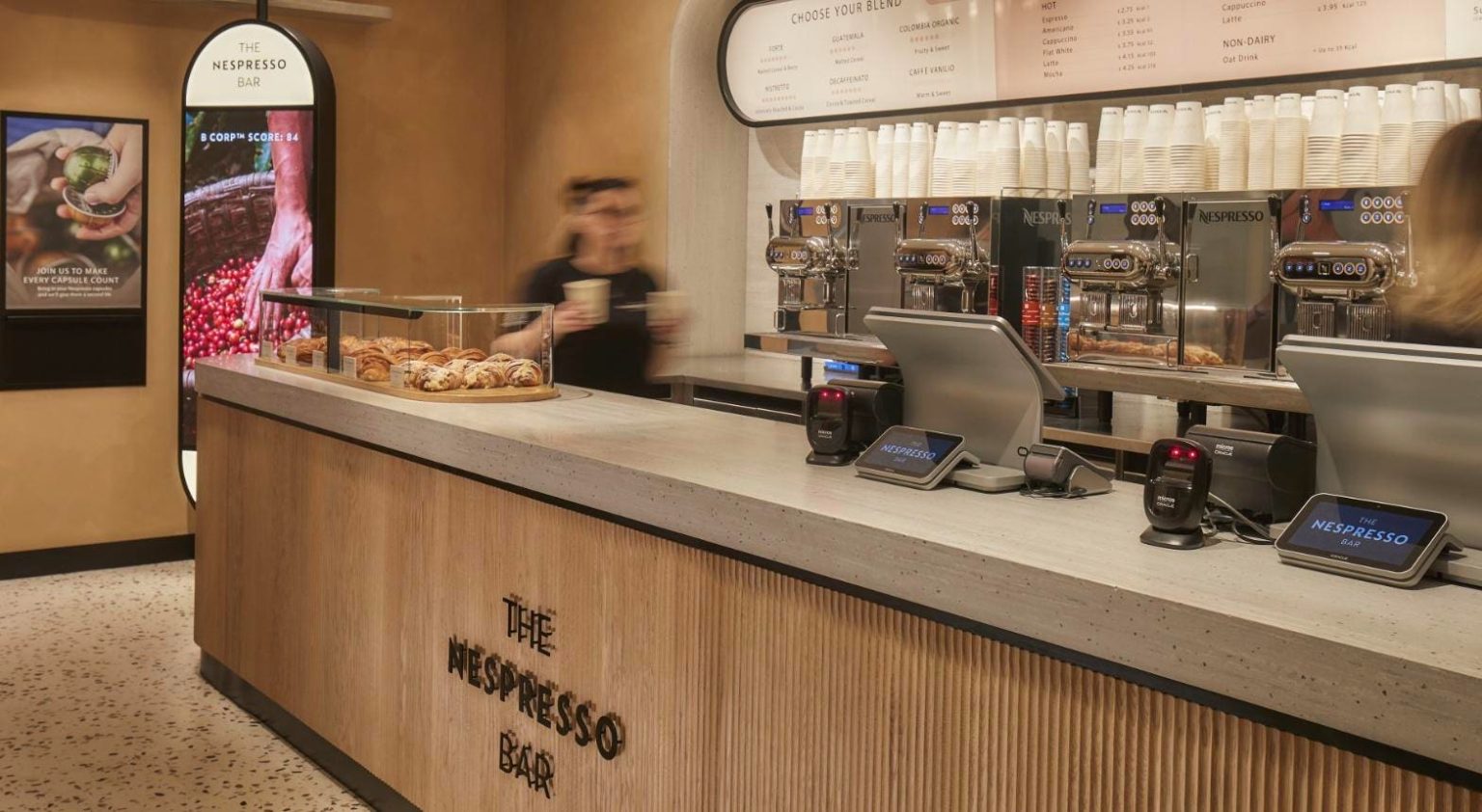Last week, Nespresso opened its first location devoted exclusively to coffee orders on-the-go, next to London’s Liverpool Street station. While this is not the coffee giant’s first retail space with a coffee bar, it is the first standalone location that focuses only on coffee orders, targeting coffee consumers on-the-go, an interesting move for the brand. By doing so, it is competing with coffee chains like Costa, Starbucks and local coffee shops, aiming to get a share of the thriving coffee shop culture in the U.K. Why does this matter?
Nespresso benefits from a strong market share in the coffee capsule market and undeniably high brand awareness and reputation. At the same time, it really mainly competes in the out-of-home side of the coffee industry (mostly at-home consumption as well as offices through its Nespresso professional distribution), unable to cater to its consumers on-the-go. With this new Nespresso bar, the company is aiming to address the £19 billion coffee industry more holistically and leverage its credentials to serve some of the 80% of coffee drinkers visit a coffee shop at least once a week in the U.K.
The on-the-go coffee market is very much engrained in British culture, making it an attractive segment to target. Indeed, “the on-the-go coffee experience is now an intrinsic part of the UK community, with 11 million of us visiting coffee shops across the country every day. There is a real cultural phenomenon around coffee shops and on-the-go coffee and we wanted to participate,” shared Anna Lundstrom, chief executive at Nespresso UK and ROI in a press release. The coffee shop is designed to serve commuters and workers of the dynamic business district surrounding Liverpool Street station, offering pastries and a variety of Nespresso blends in hot and cold formats, including latte, cappuccino and americano. Interestingly, these beverages are quite competitively priced relative to less premium coffee chain offerings, with a hot latte costing around £4.15, a similar price to Pret and Starbucks.
What makes this launch so interesting and relevant for the brand? Besides the clear market opportunity, it highlights a clever distribution strategy aimed at addressing all consumer demand spaces and receptivity moments. With coffee drinkers consuming coffee outside their homes so much, the opportunity to cater to them is evident and helps Nespresso get its products and brand in the mind and stomachs of consumers at home and during their daily commute. At-home coffee capsules sold mainly through its D2C model might be the company’s main distribution channel, yet experimenting with complementary retail channels can’t hurt especially if it is a high-growth, lucrative one.
If Nespresso can succeed in expanding channels with the to-go coffee shop route, so can any brand with a strong product and reputation. This expansion mindset, when thoughtfully executed, can only help a brand grow further, target more consumers and occasions while boosting awareness at the same time. Almost as important, it helps build a stronger sense of community and interaction with a consumer base that can then be converted into customers for core products sold by the brand through traditional channels. That’s why Lululemon had started hosting yoga events, why Beyond Meat
BYND
NKE
Whether this Nespresso bar becomes part of a wider route-to-market initiative or remains a test or flagship experiment remains to be seen, but the underlying motives mark a legitimate pursuit of growth within the overall coffee industry, in a region where on-the-go coffee is widely popular. As a direct brand initiative, it is a great way to engage with a new audience, cater to existing customers and expand the brand’s footprint outside its direct-to-consumer shops, demonstrating that with a bit of coherent creativity, every brand can expand its frontiers.
Read the full article here





